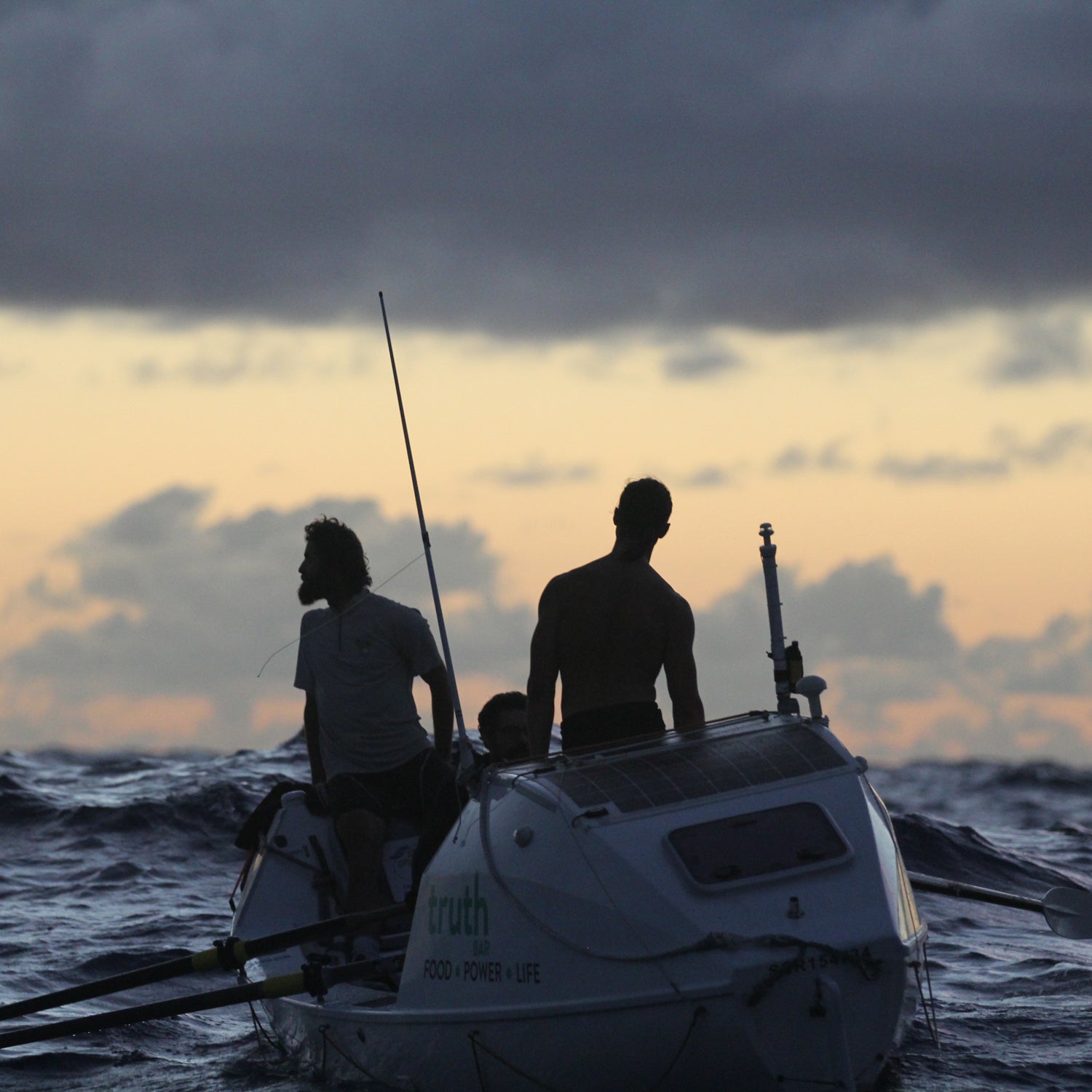It was pitch black, the wind was howling, rain was falling hard, and the four-man rowing team was still 1,889 miles from its destination in Honolulu. They’d been on the water, cranking, for 10 days, having launched from Monterey Bay, California, on June 4, and they hurt everywhere. Their rear ends, in particular, were bruised and sore.
Rowing around the clock, often in 35-knot winds and 25-foot waves, they’d stop briefly to wash, eat, and sleep (all in the span of an hour and a half), and then get up and man the oars for another hour and a half. They survived on freeze-dried food and desalinated seawater. Often they were hungry and depressed, knowing that all their loved ones were somewhere else, certainly not out on this damn lonely ocean in the middle of the night.
This is the , an endurance challenge that involves battling wind, rain, waves, currents—and maybe even your own headstrong teammates—to row 2,400 miles from Monterey to Honolulu. Eight teams set out from California, but only six made it past the first few days.
For , a four-man squad consisting of 39-year-old French-born Cyril Derreumaux, 35-year-old Icelander Fiann Paul, 41-year-old American Carlo Facchino, and 29-year-old Brazilian Thiago Silva, the ordeal ended in the early-morning hours of July 14. The foursome made landfall in Waikiki at about 1 a.m., wobbling their way onto the dock and laying claim to a Guinness World Record for the fastest boat to row halfway across the Pacific: 39 days, 9 hours, and 56 minutes.
We caught up after the race with Paul and Facchino to get an idea of the three toughest parts of the crossing—but not before they feasted on pizza, soda, and pineapples, and slept for a blissfully long four or five hours.
Shallow Water, Crazy Waves
As the rowers left California, they had to make their way across the Continental Shelf, the landmass that stretches underwater about 60 miles from the coastline. Because the ocean is much shallower, the waves are steeper and sharper, and so they break more frequently, tossing the boats around. That makes rowing extremely hard: two of the boats never made it off the shelf and had to be rescued.
The Uniting Nations Team dealt with this by taking grueling one-hour on, one-hour-off shifts for the first week, allowing each member to row with an intensity and cadence that would have been impossible on a longer shift. When they got into deeper water, they were able to switch to more manageable hour-and-a-half shifts.
Dealing With “Pizza Butt”
Body maintenance is a supreme issue for rowers on long trips. Getting enough calories—around 4,000 per day—is essential. Team Uniting Nations was doing fine until some of their freeze-dried food went bad, and they had to ration what they had left, eating only 2,000 calories per day. But a couple days from Waikiki, someone discovered another pack of food tucked in the bottom of the locker and everyone’s energy level—and mood—came back on track.
While they were dreaming of pizza, they were trying to avoid “pizza butt,” which is what rowers call the open sores that come from days, weeks, and months of sitting at the oars, with salt-water-soaked clothing chafing the skin. The solution? Lots of washing and baby wipes. But then the challenge is to stay dry in the middle of the ocean. Not happening, so pizza butt is pretty much a given.
Holding It Together
The biggest challenge for Paul, the most experienced rower, was having to lead the rest of the crew. “People may appear tough on land, but they break under pressure,” he says. “Five weeks seems like an eternity when there’s no hope anything will be better. I felt like a father sometimes, and not a very patient one.”
Facchino agrees that personal dynamics were the biggest challenge onboard. “You put four people who’ve never met each other on a boat 24 feet long and six feet wide, and make them live together, perform daily functions, and row across the ocean, and it’s a boiling point for disaster,” he says. “But at some point you just have to say, ‘we need to make it alive to the other shore. We can’t let our differences keep us from accomplishing the goal.’”
Somehow, they not only pulled it together, but achieved a world record. And it was an amazing trip, Facchino says. “You’re clipping along, the boat gliding with your stroke, and it feels effortless. There’s this incredible rhythm and oneness with the ocean and with the person you are rowing with. I’ve never experienced that on flat water.”
But for now, there’s nothing like sleeping in a comfortable bed and feasting on real food. In two weeks, the guys should be able to walk a straight line again.


